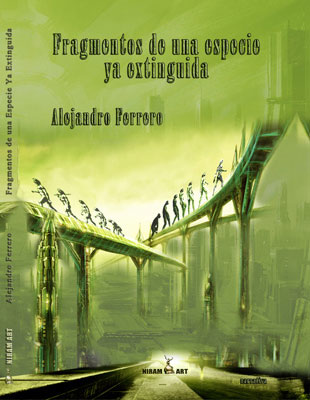Página del autor
«… que esta vez el objetivo no es el dominio de la Naturaleza, sino el dominio de la tecnología y las irracionales fuerzas e instituciones sociales, que amenazan la supervivencia de la sociedad occidental, si no la de la completa humanidad».
Tener o Ser, Erich Fromm
Me he tomado la molestia de seleccionar unos fragmentos que esbocen y homenajeen al ser humano, desde sus orígenes a su final. Dada la gran cantidad de documentos generados por esta singular especie en tan breve lapso de tiempo, la tarea fue más ardua de lo esperado y tuve que aprender a administrar nuevamente mi tiempo, un tiempo que, por desgracia, no es infinito. Agradezco por tanto a mi mujer la paciencia mostrada.
El autor
Las Leyes del Hombre: nuevas leyes de la Naturaleza
Fecha: 5 de abril de 2244.
Fuente: «Supraevolución», artículo de opinión publicado en el diario Los Tiempos Irlandeses.
Autor: John Melady.
Edad: 45 años.
Lugar: Dublín, Paneuropa.
Idioma: Inglés 23.
Si está bien o si está mal, sólo el tiempo puede decirlo, y lo dirá. A última hora de ayer, día 4 de abril de 2244, en Dublín, los representantes de los seis continentes y de la Coalición del Océano Pacífico aprobaron por unanimidad la comercialización del Panta, el nuevo fármaco que ha de cambiar el destino del hombre. Y, después de todo lo discutido, nadie tiene aún claro qué abismo es más insondable, el que abre las nuevas perspectivas del Panta, o el de las implicaciones filosóficas que conlleva la naturaleza de las nuevas leyes promulgadas, necesarias para la realización del nuevo fármaco. Porque la naturaleza de estas leyes no es sólo universal, sino que además debe ser inmutable, y esto es algo que hasta ahora la humanidad sólo ha sido capaz de aceptar de las leyes de la física.
Durante siglos la historia nos ha enseñado que todo progreso tiene consecuencias imprevisibles, que nada es gratis en el proceso civilizador del hombre. Sin embargo, comoquiera que generalmente, tras una evaluación a gran escala, el perjuicio es despreciable respecto al beneficio, la humanidad ha podido llegar, tres pasos hacia delante y un paso hacia atrás, hasta donde nos encontramos. Las tres últimas revoluciones (la industrial del siglo XX, la farmacéutica del siglo XXI y la globalizadora del siglo XXII) y sus consecuencias inspiraron el principio de Jelinek, que afirma que cuanto mayor es el grado de una revolución, mayor es el riesgo de producirse un desequilibrio irreversible. El segundo corolario de Jelinek recomendaba utilizar el triple de recursos en contrarrestar los prejuicios debidos a la revolución que en la revolución misma. Este corolario, quizá el más importante, fue rescatado de su ostracismo hace ahora apenas un año, cuando la Farmacéutica Nacional Eslava (FNE) anunció en potencia y demostró en acto el nuevo fármaco Panta. Nada como esto para entender las palabras de Jelinek, nadie ha tenido que explicar a nadie desde entonces el sentido de su principio. (…)


